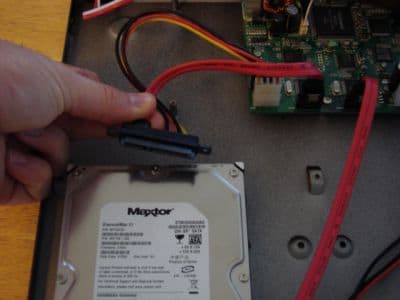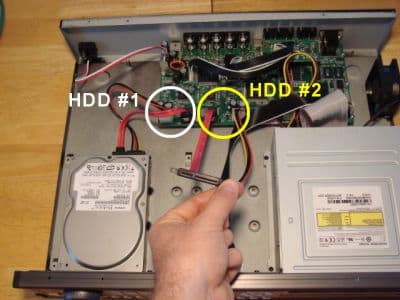The idea of
drilling holes through the walls of your home to run video and power
cables for a security camera system might seem difficult and daunting;
however with a little bit of information you might find it to be fairly
simple and an enjoyable project.
Ad
Steps
-
1
Get the right cables.
RG59 Siamese Cable, is the industry standard type of cable used for most
CCTV installs. This cable consists of one video cable and one power
cable (Positive and Negative), thus the name Siamese.
Ad
-
2
Find the right location for your cameras. There is a special CCTV design software to choose a right location for CCTV camera. For example you can use a demo of IP Video System Design Tool.
You can import your floor plans/site plan into this software and then
add cameras, choose desired camera coverage and get angle of view,
required lens focal length and 3D mockups.
-
3
For most homes cameras are installed where the roof meets the walls of the house.
This is a good location because it shelters the cameras from the
elements (Wind, rain, snow and sun). Also, cameras placed near the roof
usually have a better field of view and are less likely to be
vandalized. Another advantage is simplified cable runs Power &
video) since many homes have a small gap or hole where cables can be run
between the roof and the wall.
-
4
Find a point of entrance from the outside of the house to the inside. Most homes have an attic which is a great place to run all your RG59 lines into.
-
5
Designate one location for your DVR and Monitor to be stationed.
-
6
Bring all the RG59 lines into that room from the attic. If you purchased the RG59 cable with BNC connections already attached then at this point you would connect these to the DVR.
-
7
If you purchased a bulk roll
of RG59 cable without connections you would need to purchase the BNC
connections and crimp each end on, then connect to the DVR.
-
8
These cameras require DC voltage for their power supply.
You can either connect the power supply line from each camera
separately into an outlet (using pig tails) and an AC Adapter, or you
can get an AC/DC power supply box, plug all the camera power lines into
the box, then connect one AC power line from the outlet to the box.
-
9
Warning:-In either case you must ensure that the correct DC voltage is supplied to your cameras or they will suffer permanent damage.
-
10
It is recommended that the DVR be connected to your Monitor before turning on their power supply.
-
11
This can be an easy and entertaining project once you have the appropriate tools and information.
 CCTV Camera Pros provides the following instructions for our
incase you need to install or replace a hard disk drive. Please follow
the below instructions to install a new hard drive into your
surveillance DVR. Please note that you should first contact CCTV Camera
Pros if you believe that your hard drive is not working properly before
you open up your DVRs case. It does not happen often but from time to
time hard disk drives do go bad like any other electronic component.
CCTV Camera Pros provides the following instructions for our
incase you need to install or replace a hard disk drive. Please follow
the below instructions to install a new hard drive into your
surveillance DVR. Please note that you should first contact CCTV Camera
Pros if you believe that your hard drive is not working properly before
you open up your DVRs case. It does not happen often but from time to
time hard disk drives do go bad like any other electronic component.











